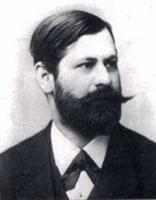
SciAm Mind: 'Smart drugs' and consciousness:
The new edition of [Scientific American Mind](http://www.sciammind.com/) has hit the shelves and two articles are freely available online: one on '[smart drugs](http://www.sciammind.com/article.cfm?articleID=0000E503-E27C-1329-A27C83414B7F0000)' and the other on the problem of [consciousness](http://www.sciammind.com/article.cfm?articleID=00019F6C-E9EC-1329-A41C83414B7F0000).
The article on 'smart drugs' or 'cognitive enhancers' is by neuroscientist [Michael Gazzaniga](http://en.wikipedia.org/wiki/Michael_Gazzaniga) - most renowned for his work on [split-brain](http://en.wikipedia.org/wiki/Split-brain) patients.
Gazzaniga examines the ethical implications of having a society cranked-up on pharmaceutical brain enhancers, and looks at the science behind some of the most recent developments in the field.
He makes one particularly interesting point in relation to the relatively developed field of memory enhancing drugs, which have the potential to make the important process of forgetting more difficult:
For a society that spends significant time and money trying to be liberated from past experiences and memories, the arrival of new memory enhancers has a certain irony. Why do people drink, smoke marijuana and engage in other activities that cause them to take leave of their senses? Why are psychiatry offices full of patients with unhappy memories they would like to lose? And why do victims of horrendous emotional events such as trauma, abuse or stressful relationships suffer from their vivid recollections? A pill that enhances memory may lead to a whole new set of disorders.
The article on consciousness is by [Christof Koch](http://en.wikipedia.org/wiki/Christof_Koch), who highlights recent research which has looked for the '[neural correlates](http://en.wikipedia.org/wiki/Neural_correlate_of_consciousness) of consciousness' - i.e. which parts of the brain are active when conscious experience is known to occur.
This is a common but controversial approach to understanding consciousness, and one that has been championed by Koch in his own work.
Additional articles that appear in the print edition only include a discussion of the developing mind of infants and what it could tell us about the differences between men and women, the psychology of child-parent interaction and how it is understood (or misunderstood) by the courts, plus an exploration of synaesthesia.
[Link](http://www.sciammind.com/) to Scientific American Mind.
—[Vaughan](http://tinyurl.com/6udmu).
En
http://www.mindhacks.com/blog/2005/09/sciam_mind_smart_d.html


